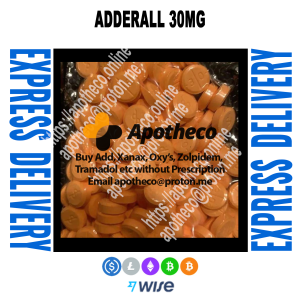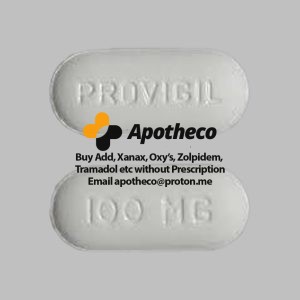ADD/ADHD
What is the difference between ADD and ADHD? 3 types ADD
ADD is a term used to describe the symptoms of poor attention, distraction, and working memory. ADHD is a term that describes hyperactivity, impulsivity, and other symptoms. Both symptoms are part of the medical diagnosis for attention deficit hyperactivity disorder. We will explain the two different presentations of attention deficit hyperactivity disorder.
What is ADD (Attention-Deficit Disorder)?
ADD is a term used to describe a condition that manifests symptoms of inattention and distractibility. It also has deteriorated working memory. Adults with ADD may have difficulty focusing, forget appointments frequently, lose track of time, and have problems with executive functions. These symptoms indicate what clinicians call Attention Deficit Hyperactivity Disorder (ADHD) with a Predominantly inattentive Typology. ADD is no longer a diagnosis and is outdated. However, it is still used to describe a subset of symptoms under the umbrella term ADHD.
Is ADD a real disorder?
ADD is a disorder that exists but is no longer called ADD. The disorder that used to be called ADD (attention deficit hyperactivity disorder) is now called ADHD.
What is the difference between ADD and ADHD?
ADD (attention deficit disorder) is a colloquial term for one Type of ADHD — the Predominantly Inattentive Type, formerly called attention deficit disorder. ADD is the colloquial name for a particular form of ADHD, Predominantly inattentive Type. To summarize:
- Attention deficit hyperactivity (ADHD), a psychological or neurological disorder, is also known as ADHD.
- However, “ADD” can be used to describe Predominantly inattentive Type ADHD and its associated symptoms.
- Many parents, teachers, and adults still use “ADD” to describe their children.
Symptoms of ADD – Predominantly inattentive type ADHD
Predominantly Inattentive Type ADHD (formerly ADD) does not manifest the same way as its counterparts, Predominantly Hyperactive-Impulsive and Combined Types.
ADD symptoms include:
- Poor working memory
- Attention
- Distraction
- Poor executive function
What is ADHD?
Doctors diagnose Predominantly hyperactive Type ADHD. This diagnosis is more accurate in describing ADHD symptoms.
- An impulsive, squirmy individual (usually a young child )…
- Bursting with energy…
- Who is the one who struggles to wait their turn?
Hyperactive or impulsive ADHD in adults can be…
- Talkative
- Fidgety
- Have nervous energy
What are the symptoms and differences between ADD and ADHD?
People with ADD often lack the hyperactivity component, which is a prominent symptom of Predominantly Hyperactive-Impulsive ADHD. In the classroom or at work, they may appear disorganized and uninterested. Also, they can forget, lose things, and have difficulty following instructions.
Predominantly Hyperactive-Impulsive ADHD fits more closely with our perception of attention deficit – a fidgety and impulsive individual (often children) full of energy who struggles to wait their turn in line. This type of ADHD often manifests with behavior problems and an inclination towards acting out.
How is ADHD diagnosed?
There is no one test to diagnose Predominantly inattentive Type ADHD, formerly ADD. Since children with ADD tend to be quiet and not disruptive in the classroom, they can be misunderstood as “shy.”
Your doctor will look for ADHD symptoms that have been present in the last six months. Your doctor will perform a physical examination and review your medical records to eliminate any medical or psychiatric conditions which could be causing the symptoms.
A doctor will know which Type of ADHD is appropriate once they completely understand all the symptoms. Our comprehensive ADHD diagnosis guide contains more information.
The 3 Types of ADHD: A Closer Look
Symptoms of ADHD (formerly ADD) that are primarily inattentive
Most people who claim to have ADD have symptoms of the inattentive form, such as forgetfulness, poor focus, lack of organization, and poor listening skills. Inattentive ADHD is often mistaken for a mood disorder, especially in adults. It’s also a common cause of apathy and spacey behavior in girls.
According to the Diagnostic and Statistical Manual of Mental Disorders – V (DSM-V),2 six of the symptoms listed below must be present to diagnose ADHD, Primarily Incontinent Type:
- Has difficulty maintaining attention
- Does not listen to you when you speak to him
- The person does not always follow instructions and often fails to complete projects
- It may be difficult to organize your tasks and activities.
- Avoids, dislikes, or is reluctant to perform tasks that require sustained mental efforts
- Loses items necessary for activities/tasks
- You are easily distracted
- Do you need to be more careful in your daily activities?
Take one of the self-tests below to determine if you have ADHD Primarily Inattentive. Share your results with a doctor.
Symptoms of Hyperactive-Impulsive ADHD
This sub-type includes many stereotypical ADHD traits, such as a child (usually a boy) who bounces off the walls and interrupts in class. They also fidget almost constantly. Only a small percentage of children and adults meet the symptoms criteria for this form of ADD and ADHD.
According to DSM-V, six symptoms are required to be present for a diagnosis to be made:
- Squirming or fidgeting with the hands or feet
- In situations where you are expected to remain seated, such as in a classroom or other places.
- Teenagers and adults who feel restless or excessively run around or climb in inappropriate situations
- The appearance of “moving” or acting as if “driven by a motor.”
- Talks excessively
- Answers blurred out
- Can’t wait to be called?
- Intrudes or interrupts others
Symptoms of Combined Type ADHD occur if you have six or more symptoms, each of inattentive and hyperactive-impulsive ADHD.
Does Hyperactive-Impulsive ADHD Look Different from Inattentive ADHD in Everyday Life?
- Inattentive ADHD symptoms: Careless mistakes
In his hurry, a child with ADHD inattentive may rush through the quizzes. He might need to help understand questions to which he already knows the answer or skip sections. Adults may need to proofread documents or emails at work, which can lead to further problems.
- Inattentive ADHD: Problems with Attention Sustaining
Children with ADHD who are inattentive may find it challenging to stay focused on organized activities such as sports or games and even simple tasks like cleaning their room. Adults may need help to focus on long readings or conversations.
- Inattentive ADHD symptoms: Failure to listen
Inattentive ADHD can make children and adults seem distracted when they are spoken to, even if there is no obvious distraction. Does not finish tasks, schoolwork, or chores.
- Inattentive ADHD: Problems with instructions
Children, teenagers, and adults with ADHD inattentive struggle to complete their schoolwork, chores, or other duties at work.
- Inattentive ADHD Symptom: Poor Organization
ADHD can make it hard to stay organized at any age. A child may struggle to keep her locker in order, a teenager might have trouble keeping track of college applications, and ADHD adults could feel overwhelmed with work emails. Lack of organization is often associated with messy work and poor time management.
- Inattentive ADHD: Avoidance of complex tasks
Adults and adolescents with inattentive ADHD have difficulty completing tasks that require sustained mental effort, such as long homework assignments, reviewing documents, and filling out forms.
- Chronically losing things is a symptom of Inattentive ADHD.
Inattentive ADHD can cause kids, teens, and adults to frequently misplace essential items like school materials, glasses, or keys.
- Inattentive ADHD symptoms: Easily distracted
Adults with inattentive ADHD can be distracted by unrelated stimuli and lose focus.
- Inattentive ADHD Symptom: Forgetfulness
Inattentive ADHD is often characterized by forgetfulness. This is especially true for teens and adults.
Do More Women Have Inattentive Type ADD and ADHD Than Have Hyperactive-Impulsive ADHD?
ADHD doesn’t discriminate against gender but is often misdiagnosed among girls. More women and girls have Inattentive ADHD than have Hyperactive-Impulsive ADHD. Inattentive ADHD is often overshadowed in young girls and women by hyperactive boys who display stereotypical hyperactive ADHD behaviors. Medical professionals usually mistakenly diagnose ADHD symptoms as mood disorders instead of ADHD. Take our ADHD test for girls and women if you suspect your child may suffer from ADHD symptoms. Share your results with your doctor.
It is important to note that Inattentive Type ADHD does not only affect girls. This subtype of ADHD is also common in boys, but their symptoms are often overlooked or misdiagnosed because of gender stereotypes.
Write only about ADHD. Why is that?
Apothecary Online has a variety of articles on ADD, ADHD, and hyperactivity. We use “inattentive ADHD” because “ADD” has been deemed outdated by doctors to describe the subtype not associated with hyperactivity and impulsivity. We use the term ADHD to broadly mean both the inattentive and hyperactive/impulsive sub-types and “hyperactive/inattentive ADHD” when appropriate.




